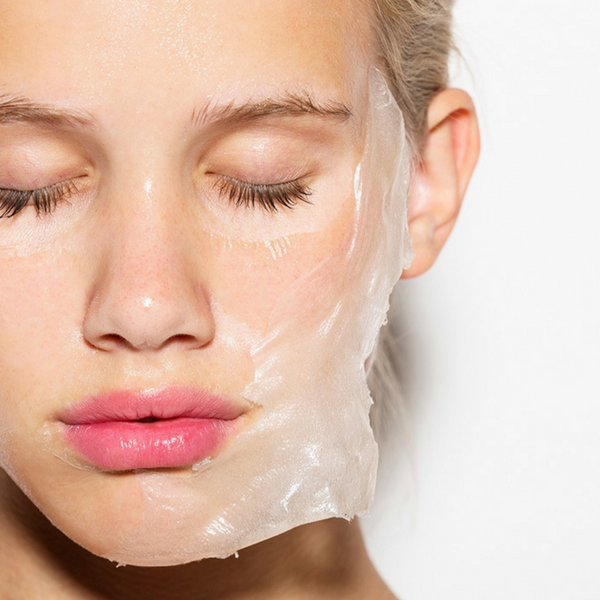
What is “Skin Brightening” exactly?
We all know the skincare “buzzwords” that are incorporated into skincare ads, labels, and reviews.
Think adjectives like “moisturising,” “enhancing,” or “glowing.”

After all, we both know that slathering on a “brightening” night cream won’t make your face light up the room like a toddler’s night light, but do we know what it really means to brighten our skin?
If you don’t—you’re certainly not alone.
And that’s what I’m here to help you out with today!
This blog post is dedicated to tackling the topic of brightening: what it is, what it isn’t, how to achieve it, and why you may want to achieve it (or why you may not).
Buckle up your seatbelts ladies, and let’s ride right into a crash course in brightening 101!

What Does It Really Mean When a Skincare Product is “Brightening?”
As you may have realised from some of my previous blog posts, the beauty industry can be quick to hop on a trend—whether that be a hot new ingredient or a promised effect.
The word “brightening” falls into a similar predicament, in a way.
Because “brightening” can mean so many different things, many beauty brands, bloggers, etc. use the word to mean a multitude of things.
Most commonly, brightening is used to mean lightening, fading, or, at its most extreme cases, bleaching.
Brightening is also used to describe products that may block the production of pigment and/or lift pigment out of the skin (think dark spots from the sun or acne scars).
Brightening can also be used to describe products that help to increase cell turnover and therefore speed up the flaking away of damaged upper layers of the skin to reveal the beautiful baby-soft skin below (think of it as a great compliment to your exfoliator).
Because of the variety of effects that the word “brightening” is used to encompass, the most effective way to figure out what a product really does is to take a gander at the ingredients list.
But, before we get into the ingredients, let’s tackle the topic of why you may want to brighten your skin.

The Benefits of Brightening
As I mentioned, one of the benefits of brightening can be reduction and/or complete erasure of dark spots from scarring, acne, sun exposure, etc.
Depending on your skin type, you may be more prone to dark spots, and if that’s the case you’ll definitely benefit from brightening products or procedures.
If you suffer from a skin condition such as melasma, brightening products should always be in your arsenal, not to mention your daily skincare routine.
Even if you don’t currently have melasma, you may suffer from melasma during pregnancy(as I did), which is where brightening products can lend a hand.
As an added bonus, most of the ingredients used in brightening products also do double-duty in that they provide moisture and antioxidants for your skin to drink up—and who among us couldn’t use some more of that?
For this reason, many women love brightening products not for their ability to fix what many women see as skin “problems,” but also to give them that glowy look that we get after a tropical vacation (or simply after we’ve actually had a full night of sleep).
While there are a slew of benefits to brightening that can alleviate many of our most common skincare problems (especially as we get a bit older), there are a few drawbacks to brightening.
Most importantly, certain brightening products do not work as well on darker skin tones, and you have to be careful so that you don’t end up over-correcting your dark spots by making them brighter than your base skin tone.
This is one of the reasons I recommend applying a brightening product all over your face rather than only in certain problem areas.
Another thing to look out for in brightening products is their ingredients list.
Not all brighteners are created equal, and certain ingredients and procedures have not been tested for their long-term effects on our skin, not to mention on our overall health.
This brings me to my next point—where I’ll dive deeper into which ingredients to go for and which to avoid—so keep reading!
Brightening Ingredients To Watch Out For
Ingredients To Avoid
Many brightening products incorporate hydroquinone, an ingredient that effectively bleaches the skin.
While hydroquinone can be safe for lighter skin tones, it can cause adverse aesthetic effects on those of us with darker skin tones.
This goes doubly if you plan on only applying the brightening product to certain spots on your face — you may end up looking like a leopard!
There have also been general concerns about the safety of using hydroquinone on your skin, and the jury is still out on if using hydroquinone in your beauty routine can cause adverse effects down the road.

Ingredients To Embrace
Instead of taking your chances on products with hydroquinone, I recommend vitamin C products.
Vitamin C is safer for your precious skin because its effects are more lightening and fading rather than bleaching.
Plus, vitamin C is a natural antioxidant!
Glycolic acid is another option for brightening, as it’s a great exfoliant (which means it’ll help to remove those damaged upper skin layers), and it naturally brightens the skin.
If you have sensitive skin, you may want to search for a product with lactic acid, which is a good option for brightening that likely won’t upset even the most sensitive skin.
Other ingredients to look for in a brightener include licorice extract, vitamin B3 (niacinamide), retinol, and alpha and beta hydroxy acids.
Two newer ingredients, melanozyme and kojic acid, have also been popularised for their ability to safely brighten the skin in recent years.
Both melanozyme and kojic acid help to lighten and fade dark spots without bleaching the skin or overcorrecting, which makes them safe for any skin tone!


